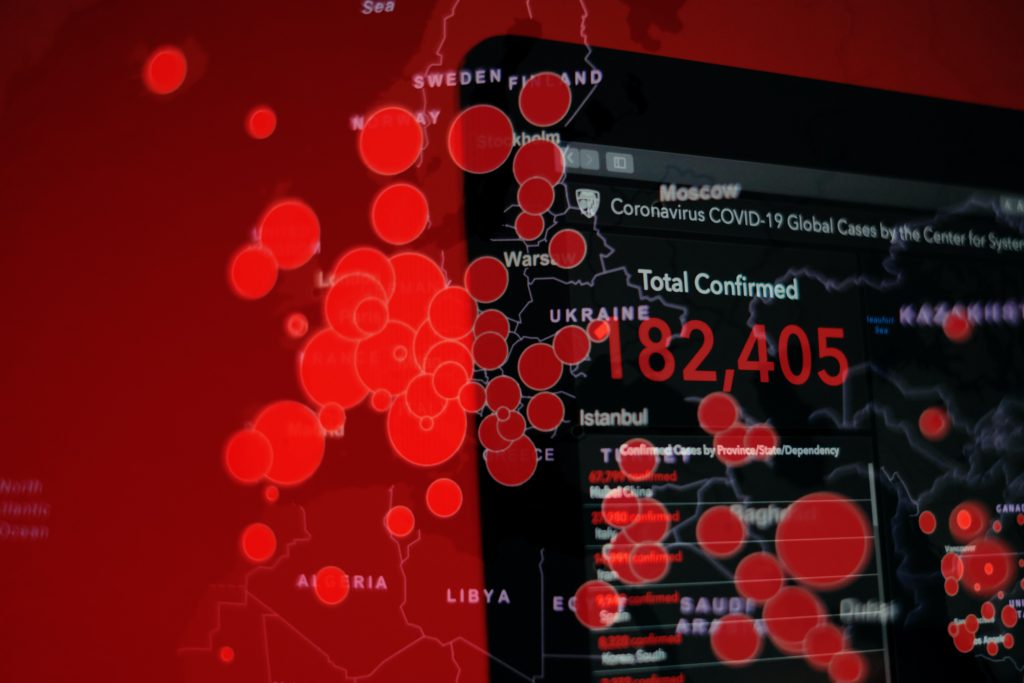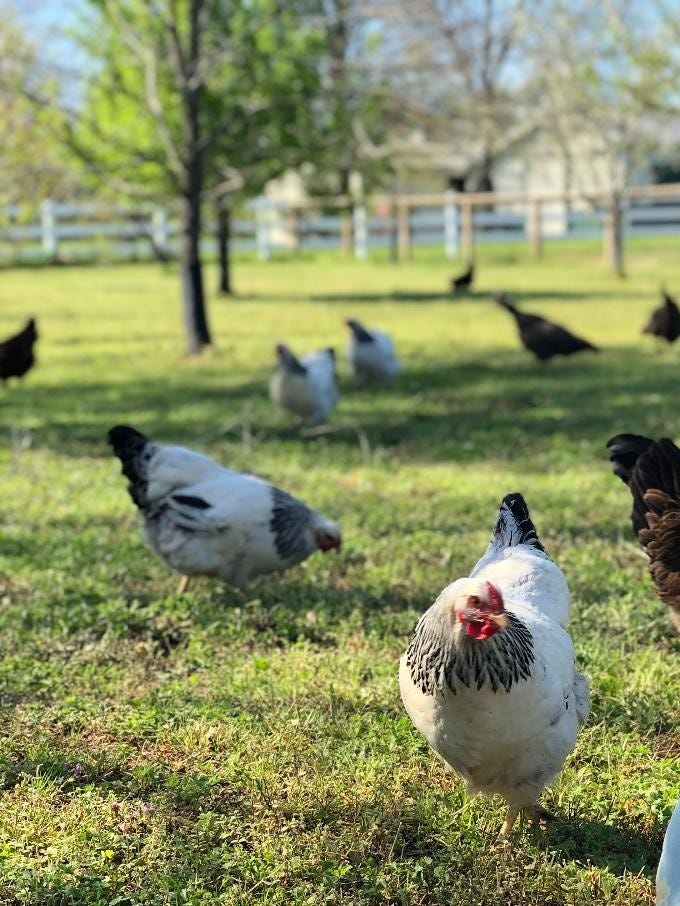Lessons from the Birds and Bees

We are hard-wired for panic. Good thing, since a ho-hum reaction to the saber-toothed tiger hiding in the bushes would’ve sent us the way of the dodo bird long ago. Fight or flight jolts of adrenaline get the blood pumping and spur us to action and, by design, safety and preservation of the species.
So when we’re faced each morning with news of a pandemic and climbing fatalities, when the world as we knew it now seems fundamentally unsafe, our brains are primed for the panic response: a saber-toothed tiger lurks in every shadow. A wary reaction may be warranted, even wise, but a measured wariness is different from spreading anxiety and fear far and wide.
Unfortunately, panic, like the invisible virus we’re up against, is also contagious.
I keep a small flock of hens on our small-acre farm. The other day I casually walked past their pen carrying one of those large, folded patio umbrellas, and one or two of them mistook it for a chicken-slaying pterodactyl. All at once, fourteen hens flung themselves against the furthest reaches of the fence, feathers in a tangle, squawking and trampling each other to escape. (Hens are not the brightest of God’s creatures.)

The world stage lately has reminded me a lot of those petrified hens. Someone detects a menace, media rushes on the scene, and suddenly we’re all flinging ourselves against the far fence, the contagion of anxiety and fear in our collective hearts. It was like this after 9/11. Then, too, we were glued as a nation to our televisions. Then, too, we whispered tightly to one another, “did you hear? have you seen?” as stories, each more wrenching than the one before, left us paralyzed with loss and fear.
It’s true: none of us is immune from the grief that’s struck us from all sides, losses large and small, from restricted social events to illness and death. We can and should take time to mourn all the very real and abrupt endings facing us.
But then.
Then, because we are human and not poultry, because we are not a herd of zebras on the savanna, we can give ourselves a beat. We can intentionally practice calm. Calm must be a deliberate focus and practice because it does not come as naturally, as immediately, as panic and anxiety. Is this frustrating? Yes, but we can do hard things. When faced with anxiety, Brene Brown suggests we pause and ask two simple questions:
Do I have enough information to freak out? Will freaking out help?
Here’s a revolutionary idea: we are not the thoughts that ricochet through our brains trying to convince us the patio umbrella is out to get us. The brain is just another organ, like a kidney or a lung. The kidney clears toxins; the lung exchanges air, and the brain has a job as well. The brain’s most basic function is to help us (its host) survive all threats. It wants to take the easiest path — run! hide! fight! — but if we give it a minute, we can observe those primitive suggestions as they float on by, simply noticing them as “thoughts generated by the brain.”
We can observe such thoughts much like we do cars when we’re driving through traffic. Instead of panicking and jerking the wheel like a new driver at each vehicle we see — police car! big truck! bus! — we drive on auto-pilot, steer smoothly, hear the song on the radio and let the cars go by. We can practice calm, breathe deeply, and pump the brakes on anxiety and panic.
Deliberately practicing calm allows us time and space to look at our options.
We can foster small actions that minimize risk. We can look for ways to be positive and not add to the melee. We can give a name to the feeling — grief, sadness, fear — thereby removing some of the power it wields over us.
Recently, I set up a few new beehives. Bees (like humans, you might say) are sensitive and particular about their space and routines. For a few days, I had to leave out one of the wooden frames in their hive to allow room to release a new queen. This extra space — the loss of their ordinary structure and environment — sends communal species like a hive of bees into problem-solving mode.
When I opened the hive to give them back the missing frame, the bees had formed a chain with their bodies, linking their legs to each other to span the empty space.

This behavior is called festooning, and no one is quite sure why they do it. It could be their way of measuring the distance between the comb, so they’ll know how much extra they’ll need to build. It could be because bees prefer a certain proximity (called a “bee space”) within a hive for communication and sharing resources.
Whatever the reason, it was a lovely image of how the best of us, in dealing with our own “missing frames,” are reaching out to each other. In times of uncertainty and anxiety, when our structure and routine is a mess, we’re checking in and spanning the distance, figuring out how to “fill in” until things reach a new normal.
One thing you want to be sure not to exhibit when working with bees is panic and anxiety. The last thing you want is a hive of unhappy bees, feeding off your agitation. The bees let me know by their behavior when I need to step away and practice calm. Often, I find myself humming or singing while working the hives. It’s the same reason good horse people speak to horses in a low, easy tone or mamas sway and hum with a colicky baby.
Calm is also contagious.
We were never meant to operate in constant panic and anxiety. Our bodies (and mental health) can’t sustain it long-term. Given that none of us really knows how long we may deal with this virus that’s reining us all in, we might learn something from the natural world. The birds and the bees, it seems, are timeless teachers.







